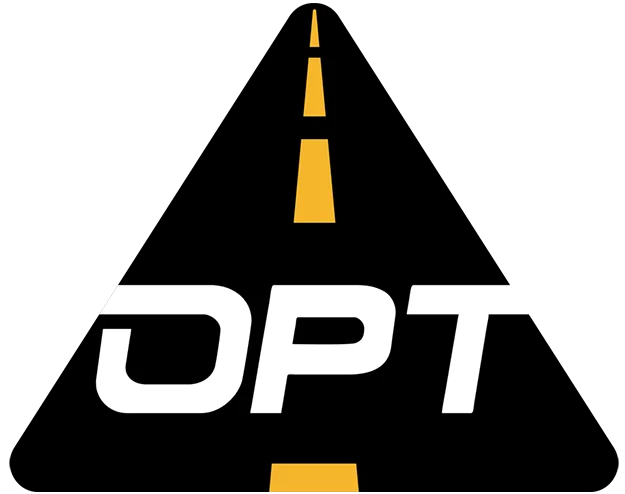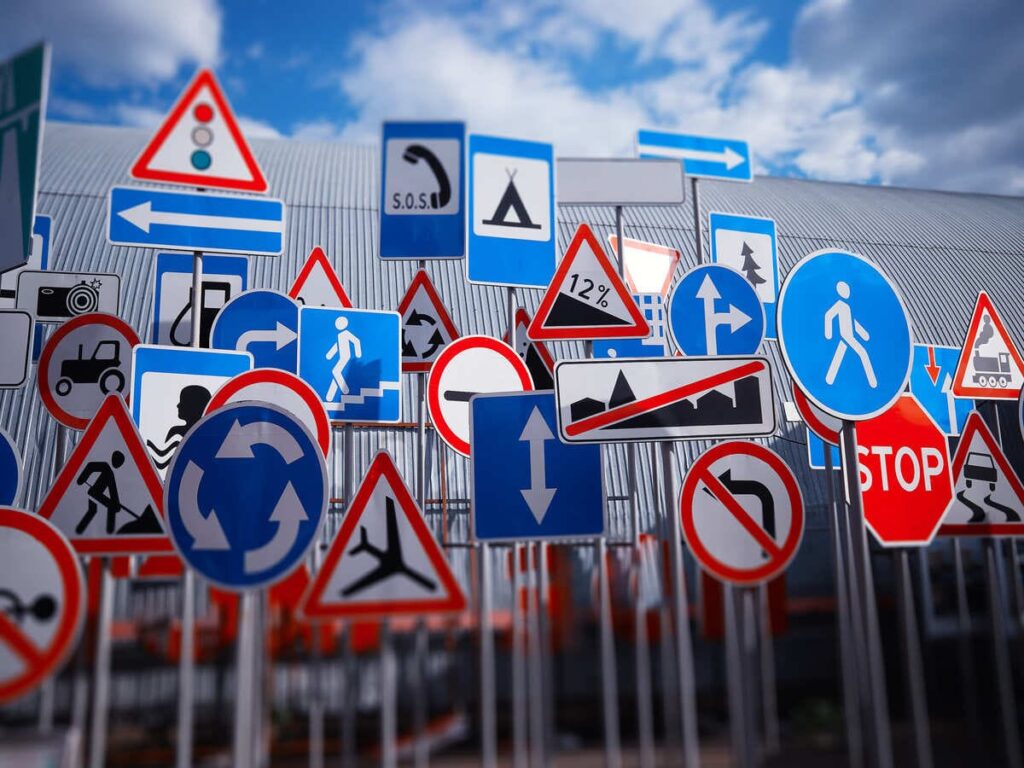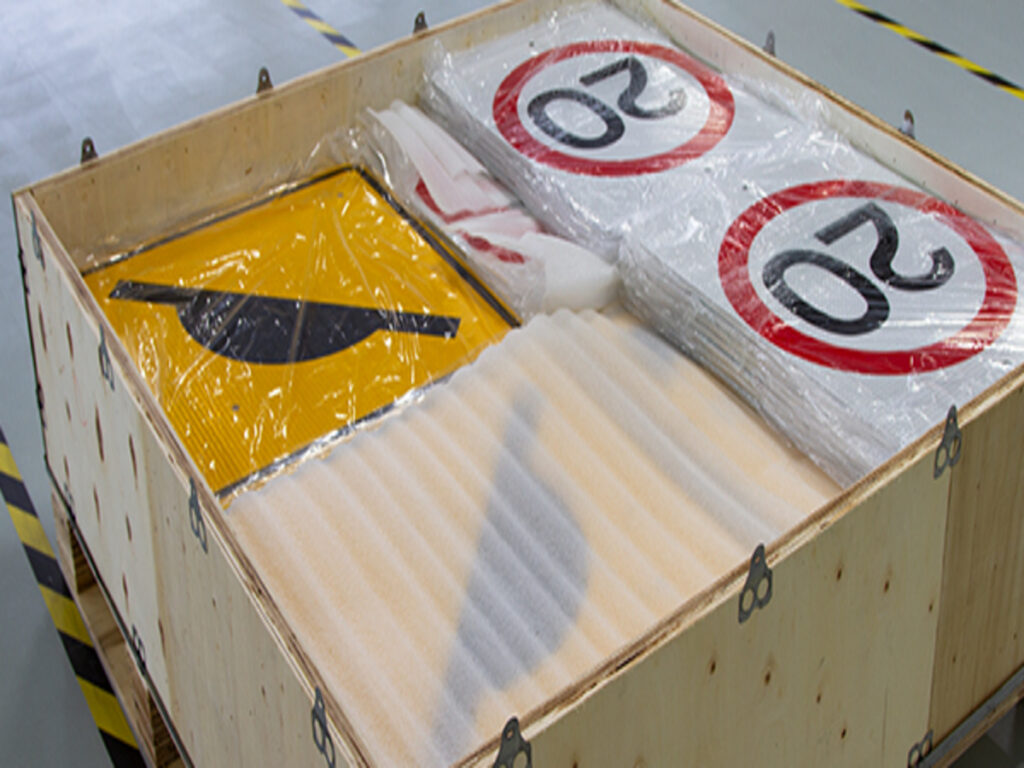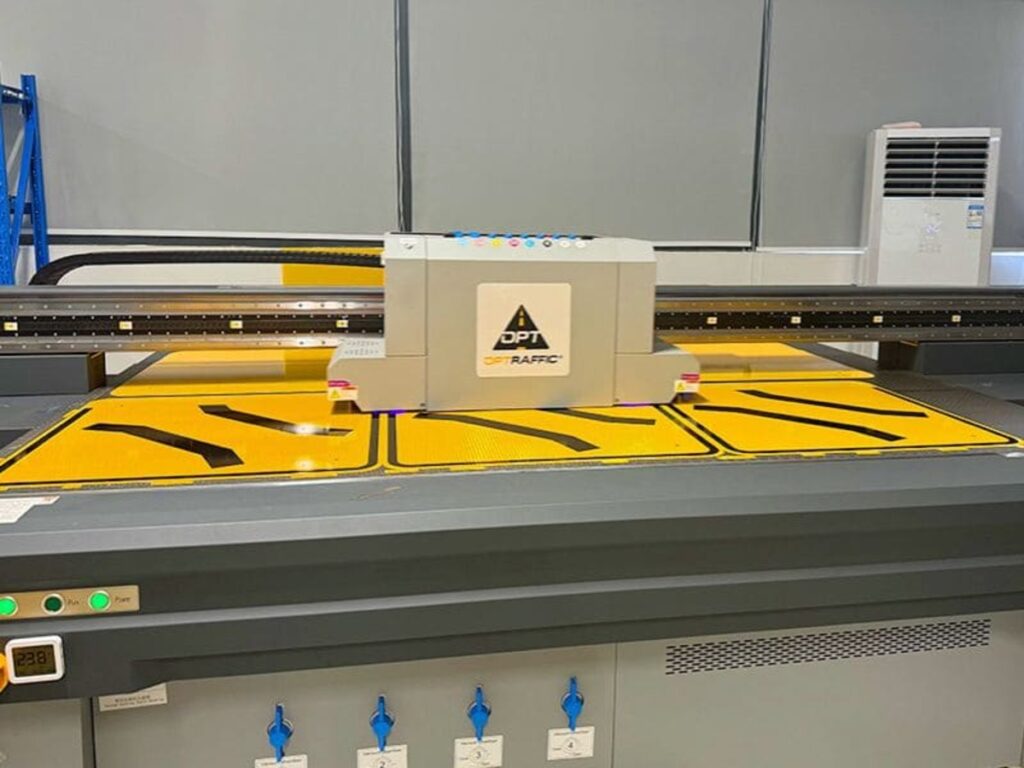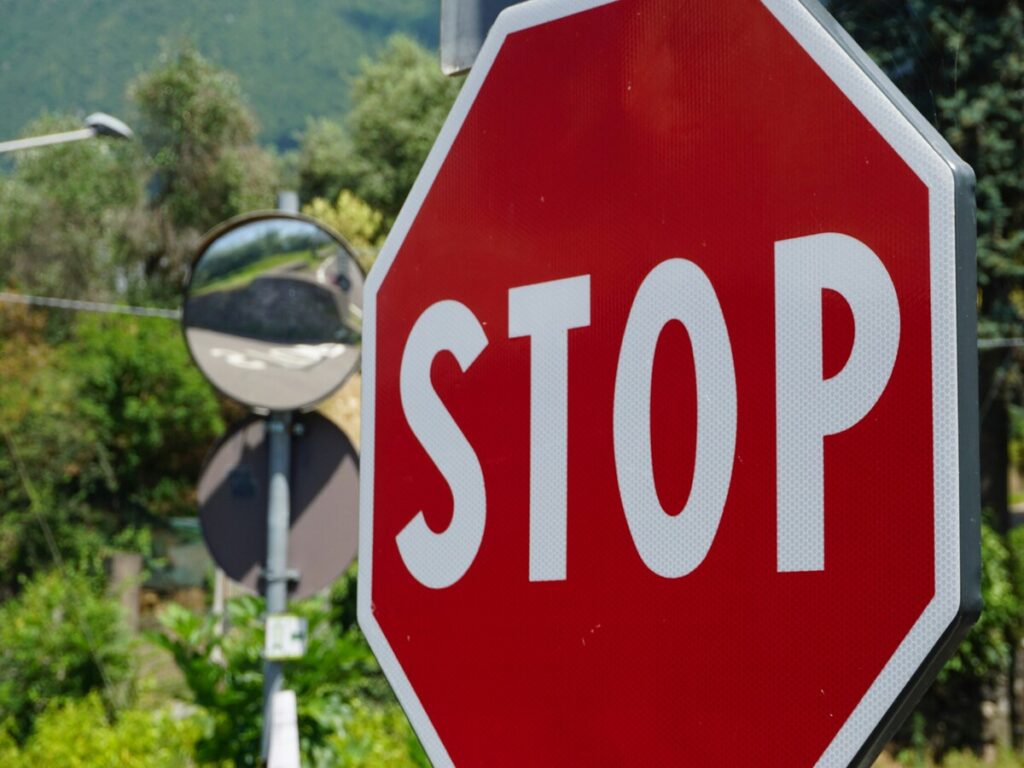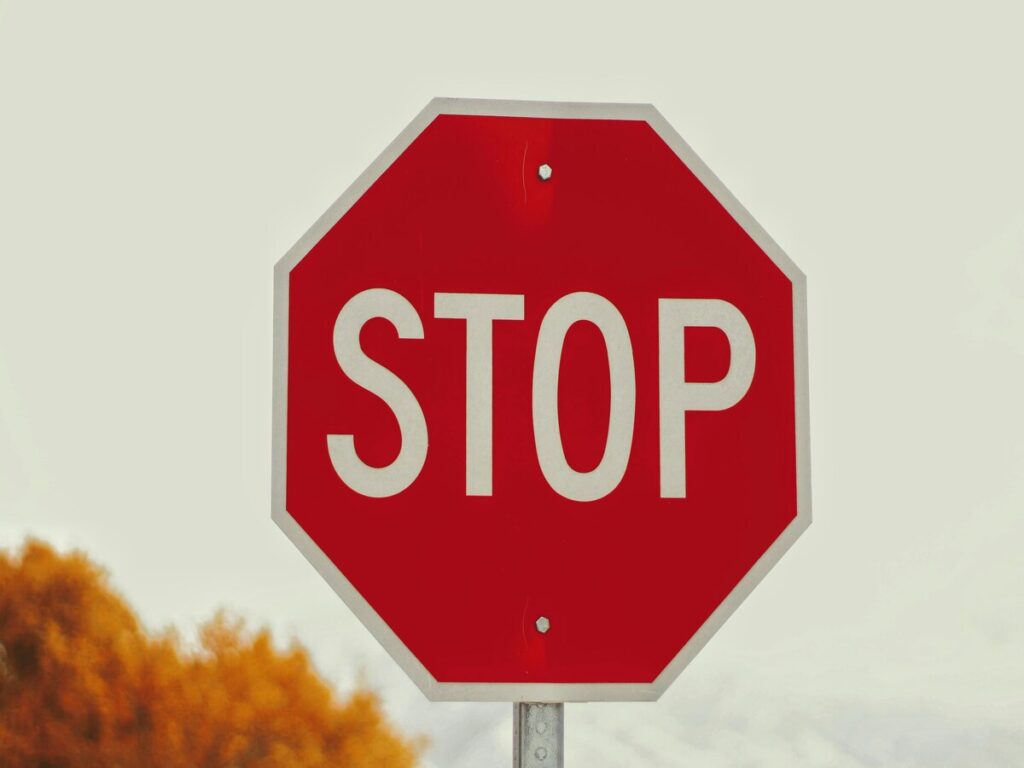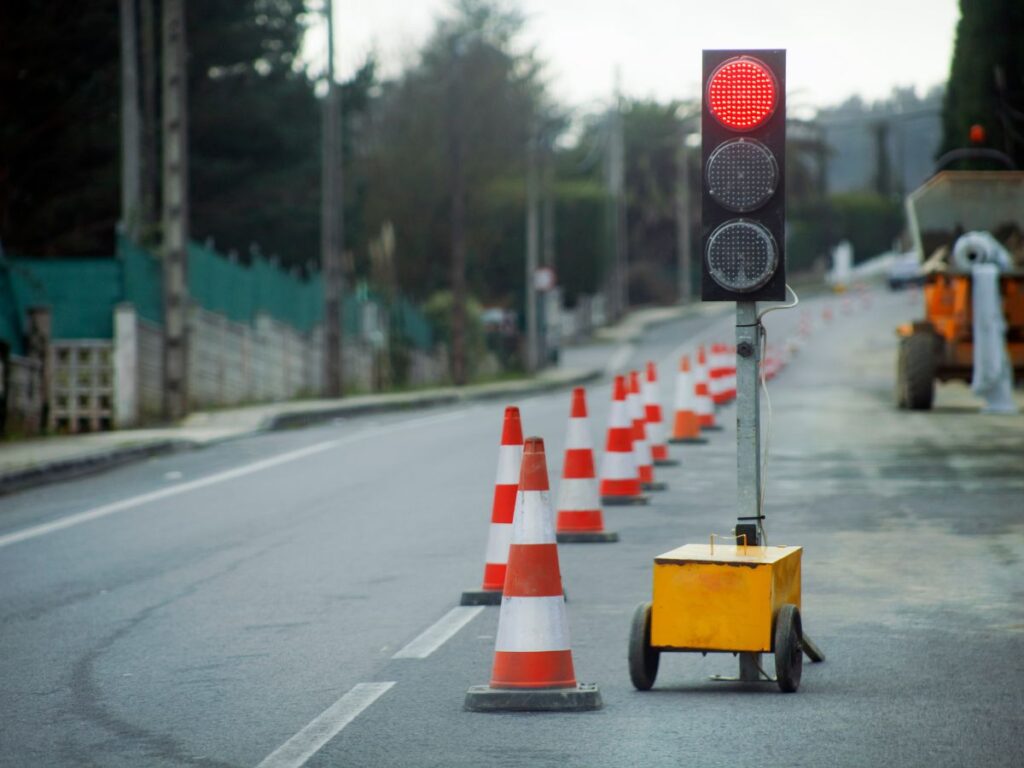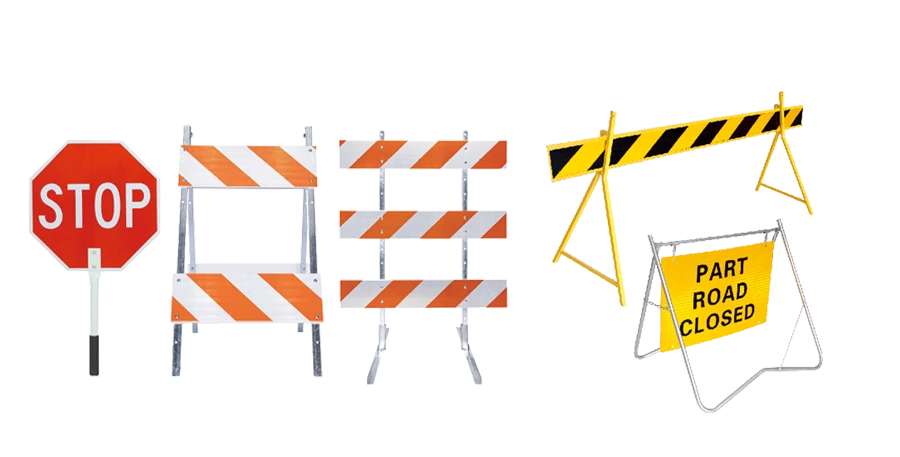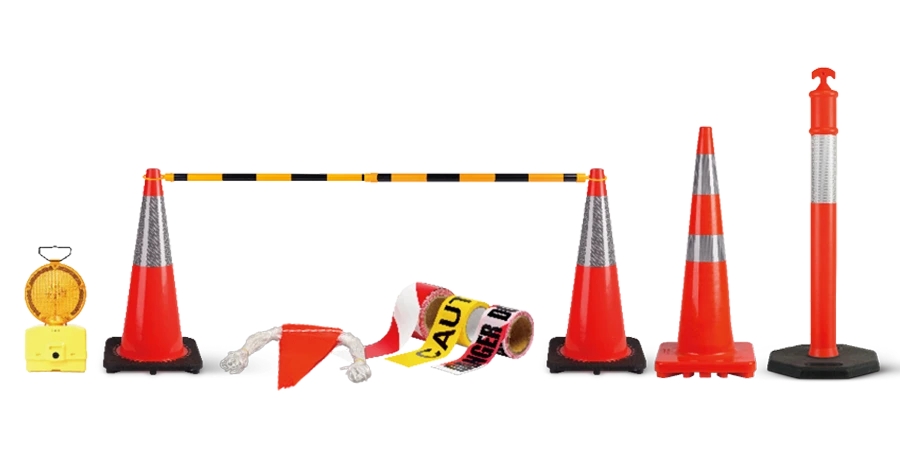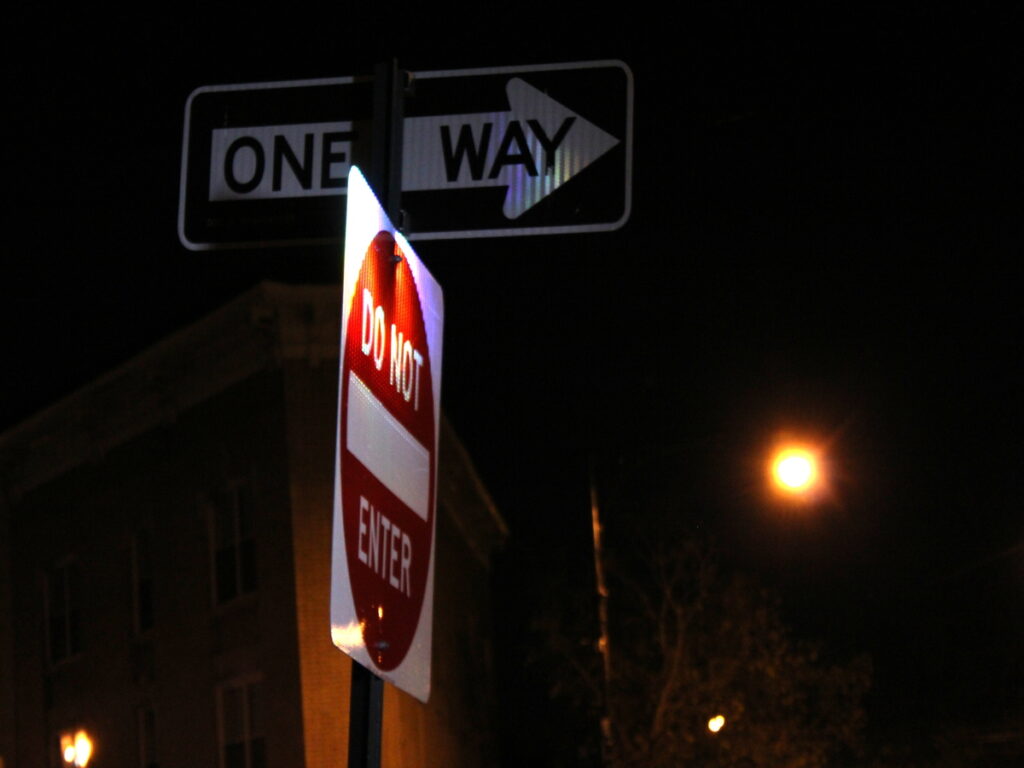
夜の運転は挑戦的です, 特に低照度の状態で. 反射的な交通標識は、ドライバーがより明確に見ることを支援する上で重要な役割を果たします. 調査は、より良い反射的な交通標識へのアップグレードが事故を大幅に減らすことができることを示しています. 例えば, スーシティは経験しました 38% アップグレードを実装した後のクラッシュの減少. さらに, より明るいストップサインはaにつながりました 4.4% 夜間のクラッシュの減少. これらの反射的な交通標識は、車両に光を跳ね返すことで機能します, それらを見つけやすくします. 適切な反射的な交通標識を選択することは、命を救うために不可欠です.
Optrafficが提供します 販売のための高品質の反射的な交通標識 視界を改善し、交通安全を高めるように設計されています. 機密性のある交通安全標識は、明確で信頼できるパフォーマンスを確保しながら、厳しい状態に耐えるように構築されています.
今日お問い合わせください あなたの安全ニーズに合った最良の反射標識ソリューションを探るために.
キーテイクアウト
- 反射的な交通標識は、ドライバーが夜によく見るのに役立ちます.
- 明るい兆候, 股関節やDG3のように, 暗い道路でのより低い事故.
- 適切なサイングレードを選択することは、安全のために重要です. 遅い領域にEGを使用します, 都市のヒップ, 高速道路用のDG3.
- 作業ゾーンの反射標識は、ドライバーを車線の変更を安全にガイドします.
- 優れた反射的な交通標識は長持ちするので時間の経過とともに費用がかかりません.
なぜ反射的な交通標識が夜間の安全に重要であるのか
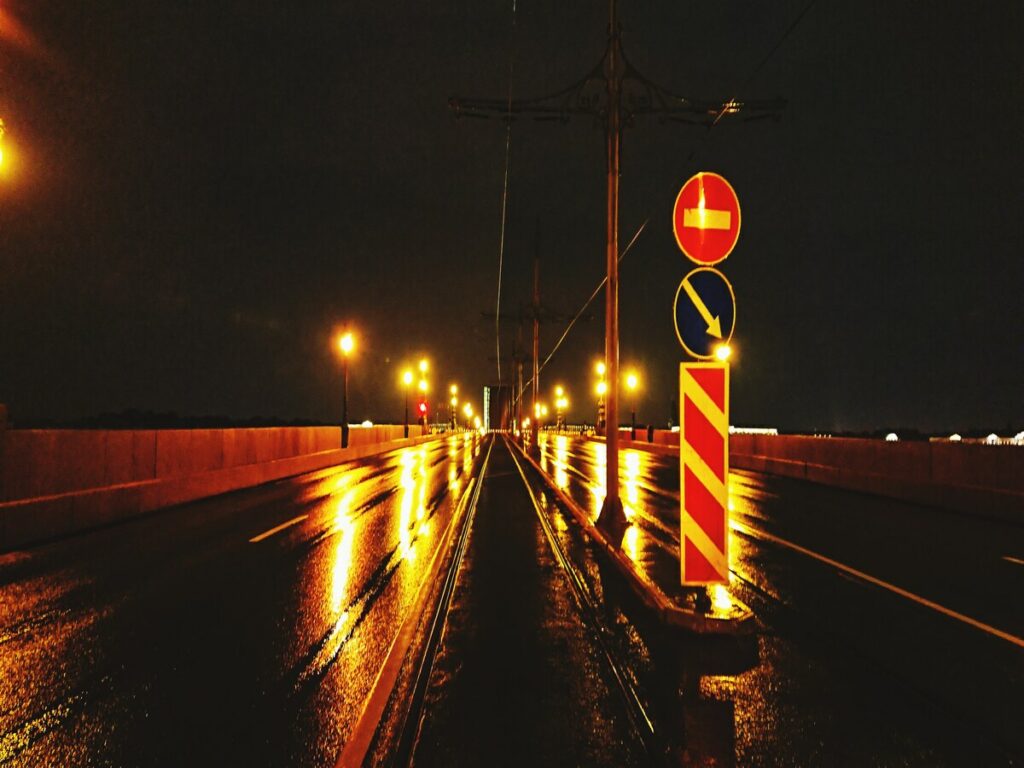
夜間にはっきりと見ているのは、交通安全のために重要な理由です
夜の運転は難しい場合があります. 暗闇の中で見るのは難しいです, これにより、道路の変化に対する反応がより困難になります. 視界が悪くなると、事故の可能性が高まります, 特に交差点または薄暗い照明エリアで. 反射的な交通標識は、夜に道路を操作しやすくすることで役立ちます. 彼らはあなたに警告に気付かせます, 方向, または、速度制限は安全に保つのに十分な早い段階です.
研究は、反射兆候が交差点で安全性を改善することを示しています. 例えば, リプリー (2005) スーシティのトラフィックサインを更新すると、衝突率が削減されることがわかりました 38%. Persaudらによる別の研究. (2008) aを示した 4.4% ストップサインをより反映した後、夜間のクラッシュを落とす. これらの研究は、視界を改善し、事故のリスクを下げることにより、反射的な兆候が命を救うことを証明しています.
| 勉強 | 結果 |
|---|---|
| リプリー (2005) | スーシティの衝突率はから低下しました 6.53 に 4.03 事故あたり100マイル (-38%). |
| Persaud et al. (2008) | 見つかったa 4.4% ストップサインの反射率を改善した後、夜間のクラッシュを落とします. |
暗闇の中で重要な安全ツールとしての反射的な交通標識
反射的な交通標識は、暗闇の中を運転するときの主な安全ツールです. 彼らはあなたの車のヘッドライトをあなたに反映しています, 完全な暗闇でも兆候を見やすくする. この反射は、重要な兆候に気付くのに役立ちます, ストップサインや速度制限のような, 遠くから.
照らされていない場所で, 田舎道や作業ゾーンのように, 反射的な交通標識はさらに役立ちます. 彼らはあなたを危険またはなじみのない場所を案内します, 混乱を減らし、交差点をより安全にする. これらの兆候なし, 暗闇の中を運転するのははるかにリスクが高いでしょう. 夜の視界を改善することによって, 反射的な兆候は、あなたと他の人を道路で守るのに役立ちます.
交通標識の折り返し性とは何ですか?
反射フィルムの仕組み - 光のリターンと拡散
折り返しを後押しします 反射的なトラフィックサインがドライバーにどのように役立つかを説明します. それは車のヘッドライトからの光をドライバーに跳ね返します. これにより、ドライバーは夜にはっきりと兆候を見るのに役立ちます. 反射フィルムの特別な素材はこれを可能にします. 通常の表面はどこにでも光を散らします, しかし、反射的なものを後押しするものは、ほとんどの光を返します.
再lectrectionは、表面がほとんどの光をそのソースに戻すと発生します. これは、交通標識にとって重要です。.
現代の反射映画は、より明確な兆候のためにより良いテクノロジーを使用します. 古いデザインはガラスビーズを使用しました, うまくいきませんでした. 今, フルキューブコーナーシートは一般的です. それは光をよりよく反映します, ドライバーがより簡単に標識を見るのを助ける.
古いretroreflofeftive標識はガラスビーズを使用しました, それは光をよく反映していませんでした. 今日のフルキューブコーナーシートは、はるかにうまく機能します, 標識をより明るく見やすくします.
ヘッドライトが反射的なサインを押したとき, 光は円錐形を形成します. これの中のドライバー “反射率の円錐” サインをはっきりと見ることができます, 遠くからでも.
ヘッドライトがサインに輝くとき, 光はコーンの形で反射します. このコーン内のドライバーは、サインをはっきりと見ることができます, 遠くからでも.
建設における反射的な交通標識の一般的な用途, 道路, 駐車場
反射的な交通標識は多くの場所で使用されます. 高速道路や通りで, 彼らは速度制限を示します, 方向, と警告. 建設ゾーンで, 彼らは車線の閉鎖や迂回路について警告します. 駐車場を使用して入り口をマークします, 出口, と特別なスペース.
交通信号のバックプレートは、しばしば目立つ反射材料を持っています. これらのバックプレートにより、信号機が見やすくなります, 特に夜に. 反射的な兆候は、照明がほとんどない農村地域でも役立ちます. 彼らは暗闇の中で安全にドライバーを導きます.
作業ゾーンの一時的な反射交通標識も反射フィルムを使用しています. これらの明るい兆候は注目を集め、混乱を軽減します. 彼らは、ドライバーが迅速な選択を行い、事故を避けるのに役立ちます. 高速道路のかどうか, 駐車場で, または建設現場で, 反射的な兆候は道路をより安全に保ちます.
交通安全標識についてもっと知りたい?
ブログをご覧ください: “交通安全標識の材料の選択と取り付け方法: あなたが知る必要があること“ あらゆる環境に適した交通標識を選択してインストールする方法に関する詳細な洞察については.
一般的な反射グレードの概要
エンジニアグレード (例えば) - 遅いエリアまたはプライベートエリアの基本的な反射率
エンジニアグレード (例えば) 標識は基本的ですが便利です. それらは、遅い速度のエリアまたはプライベートスペースでうまく機能します. 駐車場で表示されます, 近所, または、夜に交通量が少ない場所. たとえば、サインを使用してドライバーに光を反映するためにガラスビーズを使用します. これは、ドライバーが薄暗い光でそれらを見るのに役立ちます, 他のタイプほど明るくはありませんが.
たとえば、標識は手頃な価格で長続きします. 彼らは非常に明るい兆候が必要ない場所で良い選択です. しかし、動きが速いまたは暗い地域で, より明るい反射的な交通標識はより安全かもしれません.
高強度プリズム (ヒップ) - 街の通りのより良い視認性
高強度プリズム (ヒップ) 標識は例えば標識よりも明るいです. 彼らはプリズム層を使用して、より多くの光をドライバーに戻すことを反映しています. これにより、適度な速度と街灯のある街の通りに最適です. ヒップサインは見やすいです, ドライバーが警告や指示にもっと速く気付くのに役立ちます.
学校のゾーンにはヒップサインがあります, 忙しい通り, と交差点. それらの明るさは、混雑した地域の安全性を向上させます. ヒップサインも、例えばサインよりも長く続きます, それらを都市の賢明な選択にします.
ダイヤモンドグレード (DG3) - 高速道路の最も明るい標識
ダイヤモンドグレード (DG3) 標識はすべての中で最も明るいです. 彼らは高度なテクノロジーを使用して、ほぼすべての光をドライバーに戻すことを反映しています. これにより、非常に簡単に表示されます, 遠くからでも.
DG3の標識は高速道路に最適です, 田舎道, 建設ゾーン. ドライバーは、これらの高速または危険な領域で迅速に反射的な交通標識を見る必要があります. DG3反射的な交通標識はより多くの費用がかかりますが、長期にわたって安全性を向上させます. 重要な場所にとっては価値があります.
同様に, 交通コーンの反射グレード 視認性にとっても同様に重要です, 特に低照度環境で. 適切な反射シートにより、反射コーンが遠くから見えるようになります, 建設ゾーンを通じてドライバーを安全にガイドするのに役立ちます, 駐車場, または危険な領域.
反射性グレードが交通コーンの安全性と可視性をどのように高めるかについて詳しく知りたい?
ブログをご覧ください: “反射シートが反射するトラフィックコーンの鍵である理由“ コーンにおける反射材料の重要性と交通安全におけるそれらの役割を探ること.
実際のシナリオでの夜間の視認性の比較

街路照明付きの都市の環境 - EGが機能する場合
都市で, 街灯は夜に道路を明るくするのに役立ちます. これは、非常に反射的な道路標識が必ずしも必要ではないことを意味します. エンジニアグレード (例えば) 標識はこれらの領域に適しています. 彼らは基本的な明るさを提供します, ゆっくりとした道路や明るい場所で機能します. あなたはしばしば駐車場でそれらを見ることができます, 近所, または学校の近く. これらの反射的な道路標識は、ヘッドライトを反映しています, それらを薄暗い光で見えるようにします.
研究は反射的な道路標識を示しています, 特に赤と黄色のもの, ドライバーが夜によく見えるように支援します. 都市で, たとえば、反射的な道路標識ガイドドライバーが交差点でドライバーをガイドし、警告を出します. それらは他のタイプほど明るくはありませんが、コストが低くなります. これにより、彼らは照明が良好な通りの賢明な選択になります.
田舎または高速道路の設定 - なぜ股関節またはDG3の方が良いのか
田舎道や高速道路はしばしば非常に暗いです. これにより、安全のために交通安全標識が重要になります. 高強度プリズム (ヒップ) またはダイヤモンドグレード (DG3) ここでは、反射的な道路標識が最適です. 彼らは高度な素材を使用して、遠くて明るい光を反映しています. ドライバーはそれらをはっきりと見ることができます, 完全な暗闇でも. これは、迅速な決定が命を救う高速道路にとって非常に重要です.
より良い反射標識低い夜間のクラッシュ. The 均一な交通制御装置のマニュアル (mutcd) RetroReFrectivityは安全の鍵であると言います. 股関節とDG3反射的な道路標識は、曲線に十分に明るいです, 交差点, そして危険なスポット. 彼らは長持ちし、より安全な高速道路や田舎道の費用に見合う価値があります.
建設ゾーン - 反射標識が安全性を改善する方法
建設ゾーンはドライバーにとって難しいです, 特に夜に. ここでの一時的な兆候は、人々を安全に保つために速く目立つ必要があります. 股関節やDG3のような反射標識はこれに最適です. 彼らは明るくて見やすいです, ドライバーが車線の変更や迂回路に時間内に迂回するのに気付くのに役立ちます.
作業ゾーンの反射的な兆候は混乱を軽減し、安全性を向上させる. 明るい材料は、危険またはなじみのない領域をドライバーに導きます. 赤と黄色の反射色が警告をより明確にします. 適切な反射グレードを選択すると、すべての人にとって建設ゾーンが安全に保たれます.
耐久性とパフォーマンスの違いは時間の経過とともに
UV抵抗, 色保持, および接着安定性
反射的な兆候は常に日光の下にあります, フェードを引き起こす可能性があります. UV抵抗は、これらの兆候を明るく明確に保つのに役立ちます. 良い反射フィルムは紫外線をブロックします, そのため、赤や黄色のような色は大胆です. これらの色は、警告やアラートに重要です.
標識はまた、表面にうまく付着するために強い接着を必要とします. 悪化は、兆候が皮をむいたりひび割れたりする可能性があります, それらを読みにくくします. より良い反射材料を使用すると、何年もの間兆候が適切に働き続けます.
どのように高級映画がフェードと割れに抵抗するか
すべての反射映画が同じではありません. 高級映画, ダイヤモンドグレードのように (DG3), 長く続きます. 彼らは強い太陽のように厳しい天気を扱うように作られています, 雨, そして寒い.
DG3フィルムは、それらをより明るく強くする特別なプリズム層を使用します. これらの兆候は明確で読みやすいままです, 外から何年も経っても. より良い材料を選択すると、交換が少なくなります, お金と時間を節約します.
各グレードのメーカーの寿命保証
製造業者は、さまざまなサイングレードに対して寿命保証を提供します. エンジニアグレード (例えば) 標識は最後に 5 に 7 年と静かなエリアで働く. 高強度プリズム (ヒップ) 標識は続きます 10 年, 都市に適しています. ダイヤモンドグレード (DG3) 標識は最後に 12 何年もそれ以上、非常に耐久性があります.
サインを選ぶとき, 寿命保証を確認してください. 長持ちする兆候は目に見えて安全なままです, 事故と交換を削減します.
規制ガイドラインとコンプライアンス
場所と目的に基づく反射率のMUTCDルール
The 均一な交通制御装置のマニュアル (mutcd) 反射的な兆候の明確なルールがあります. これらのルールにより、兆候が簡単に表示されていることを確認します, 特に夜に. MUTCDは、さまざまな場所や使用に必要な最低反射率レベルを設定します. 例えば, 停止標識は安全に不可欠であるため、より高い反射率を必要とします.
なぜこれらのルールが重要なのか? 研究では、より良い反射停止標識が低いクラッシュ率を示しています. アイオワで, クラッシュが立ち寄った 38% アップグレード後. これは、MUTCDルールに従うことで可視性が向上し、命を救うことを証明しています.
FHWA RetreRoreFlectivityレベルテーブル
The 連邦高速道路局 (fhwa) サインの最小反射率レベルのテーブルを提供します. これらのテーブルにより、標識はさまざまな条件で見えるようにします. 高速道路や暗い田舎道の標識は、明るい都市地域のものよりも高い反射率を必要とします.
反射材料は、これらの基準を満たすのに役立ちます. プリズムシートのような高度な素材は光をよく反映しています, 薄暗い光でも. 反射的な投稿も可視性を向上させます, 事故を削減し、ドライバーを支援します. 重要な兆候にリフレクターを追加するオハイオのルールは、これがどれほど効果的であるかを示しています.
一時的な反射標識の作業ゾーンルール
作業ゾーンには追加の安全対策が必要です. ここでの一時的な反射標識は、迂回や車線の変更をドライバーに導くために厳格なルールを満たさなければなりません. 高強度プリズムのような明るい素材 (ヒップ) またはダイヤモンドグレード (DG3) 視認性を向上させるためによく使用されます.
作業ゾーンの反射的な兆候は混乱を軽減し、ドライバーが迅速に反応するのを助けます. これらの兆候の承認された材料には、波形のプラスチックとアルミニウム顔のラミネートが含まれます. これらの強力な材料は、建設中に標識を機能させ続けます, ドライバーと労働者の両方を保護します.
コストとパフォーマンスの考慮事項
前払い費と長期的な価値
販売のための反射的な安全標識を選ぶとき, コストと価値について考えてください. エンジニアグレードなどの安価な材料 (例えば) 最初はコストが低くなります. しかし、彼らは悪天候でより速く摩耗します. これは、それらをより早く交換する必要があることを意味します, これは時間とともに合計されます.
高強度プリズムのようなより良い材料 (ヒップ) またはダイヤモンドグレード (DG3) 事前にコストがかかります. しかし, 彼らは長持ちし、より明るくします. 販売のためのこれらの安全標識は、日光と割れに抵抗します, お金の価値がある. 販売のための高品質の安全標識にもっと費やすことはお金を節約し、長期的に安全を改善する.
より良い反射標識にアップグレードする理由が重要です
高品位の反射兆候は、危険な地域で重要です. 高速道路, 田舎道, ワークゾーンには安全のために明るい兆候が必要です. ダイヤモンドグレード (DG3) 標識は最も明るくて見るのが最も簡単です. 彼らはドライバーが警告に迅速に気付くのに役立ちます, 暗闇または動きの速い地域での事故の防止.
いくつかの照明がある都市で, 高強度プリズム (ヒップ) サインはうまく機能します. それらは例えば標識よりも明るく、忙しい通りや学校のゾーンに適しています. キースポットのこれらの標識にアップグレードすると、すべての人にとって道路が安全になります.
反射的な交通標識は、ドライバーが夜によく見るのに役立ちます. 高強度プリズムのような高品質の標識 (ヒップ) ダイヤモンドグレード (DG3) 暗いエリアで最もよく機能します. 販売用のこれらの安全標識により、ドライバーが迅速に気付くのを助けることにより、道路をより安全にします. 調査では、販売のためのより明るい安全標識が視界を改善し、事故の低下を示しています. 例えば, シェブロンのサイン と 65.26% より反射的な素材はそうです 286% より明るい 225 メーター. 正しい反射標識を選ぶことは、安全のために重要です, 特に危険な場所で.
| 証拠タイプ | それが示すもの | なぜそれが重要なのか |
|---|---|---|
| 測光分析 | 標識はより明るくて見やすいです | ドライバーがより速く標識を見つけるのを助けます |
| シェブロンサインリフレクティブエリア | 65.26% より反射的な素材 | 286% より明るい 225 メーター |
| ドライバーの認識 | ドライバーは標識をよりよく理解し、理解します | 夜間の運転をより安全にします |
よくある質問
反射的な交通標識を特別なものにしている理由?
反射標識には、ドライバーに光を反映する材料があります. これは、ドライバーが夜間または薄暗い光でそれらを見るのに役立ちます. 通常の標識は光を反映していません, だから彼らは見るのが難しいです.
適切な反射グレードをどのように選択しますか?
エリアとスピードについて考えてください. 遅い場所にエンジニアグレードを使用してください, 街の通りのプリズムの高強度, 高速道路や危険なスポットのダイヤモンドグレード.
建設ゾーンで反射標識が必要なのはなぜですか?
反射標識は、車線の変更と迂回路を備えたドライバーに役立ちます. 彼らは明るくて暗闇の中で見るのが簡単です. 高強度プリズムまたはダイヤモンドグレードの標識は、これらのエリアの安全に最適です.
反射標識はどのくらい続くか?
タイプに依存します. エンジニアグレードは持続します 5-7 年. 高強度のプリズムが続きます 10 年. ダイヤモンドグレードは続きます 12 何年もそれ以上、より長く状態にとどまります.
法律で必要な反射的な兆候です?
はい, mutcdやfhwaのようなルールは、標識が光を反映しなければならないと言う. これらのルールでは、夜または悪天候で兆候が見えるようにします.
